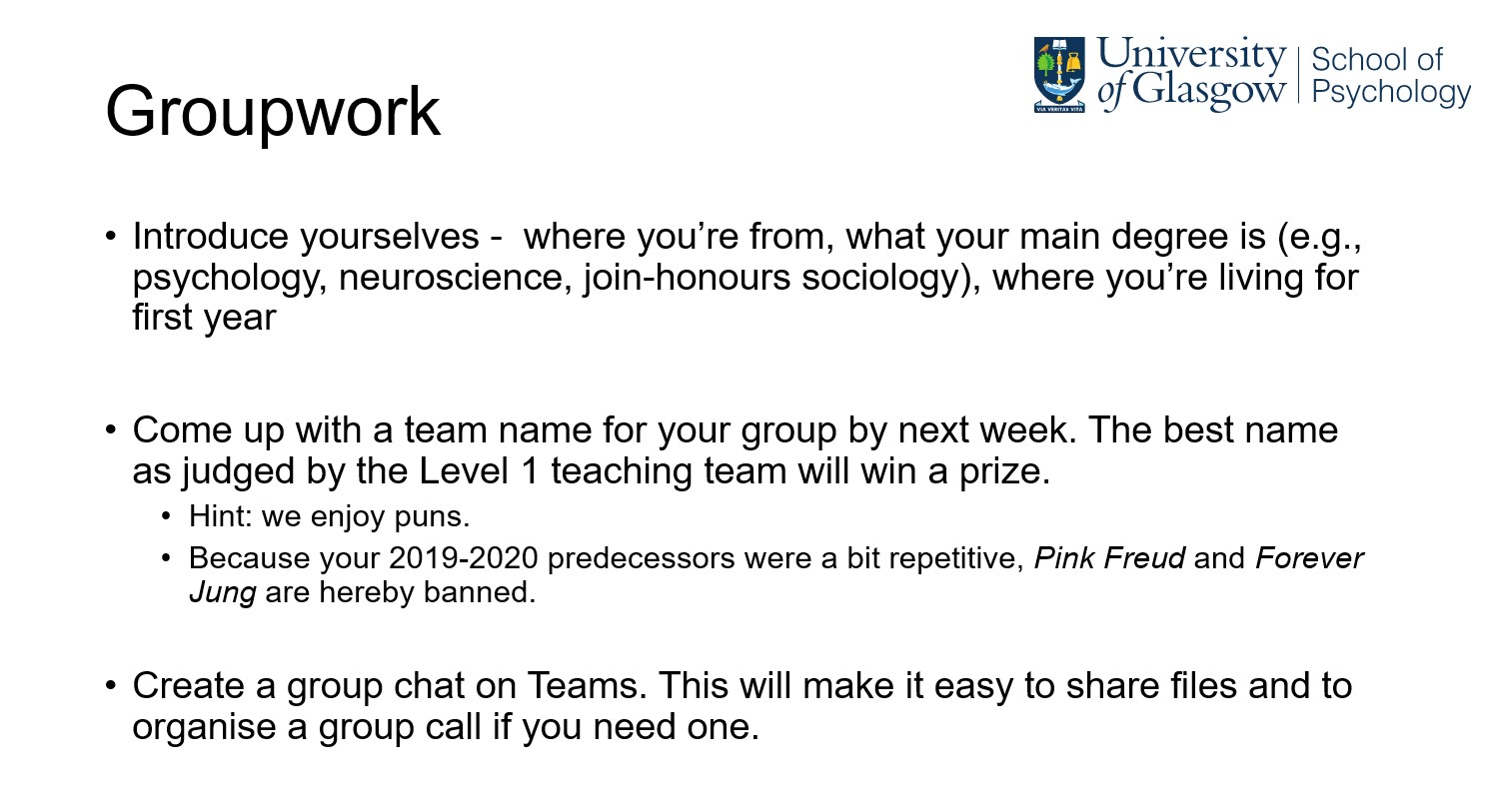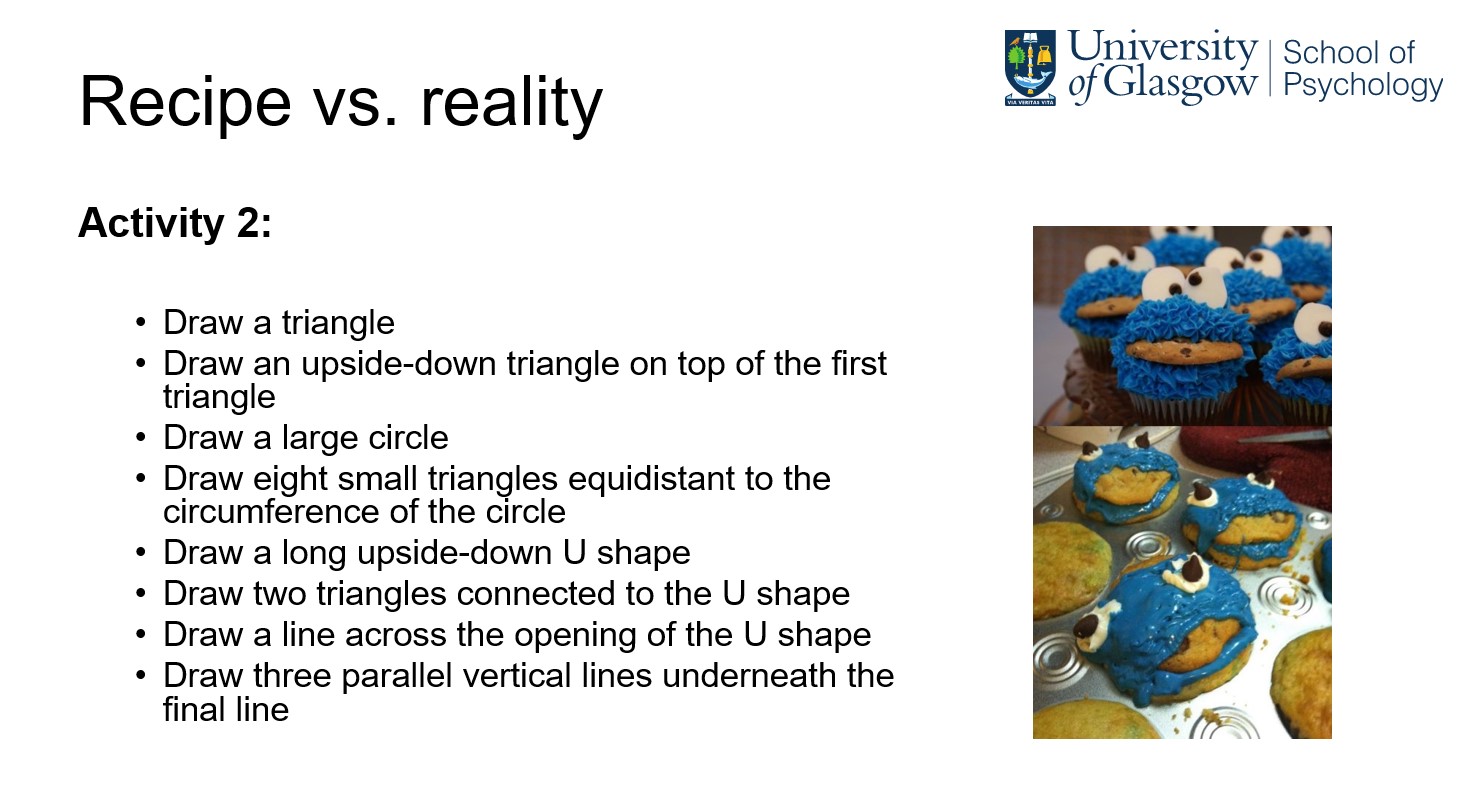Pivot 4: Hitting the road
It’s now clear that we’ll be running our small-group teaching remotely for the first semester in addition to the lectures (there will be additional f2f sessions, but core teaching will be online and I’ll talk about that in a later post). Broadly speaking the work they do in the labs in the first semester is either focused on academic writing (learning how to find and use evidence, scientific writing, researching their essay) and data skills (learning to wrangle and visualise data in R).
In the old normal they would have a two-hour lab once every two weeks. In the new normal, they will have a 30-minute Zoom tutorial every week in addition to asynchronous activities. In the old normal, the labs would consist of some didactic content (the tutor presenting a pre-prepared presentation), individual and group activities, and live-coding of R. In the new normal, the didactic sections of the labs will be pre-recorded and made available asynchronously and the individual activities have also been converted. I am really loving Microsoft Sway for this because I can combine everything into one lesson that contains the video, any written information, and embed Forms and other activities so everything is in the one place. The synchronous Zoom sessions will be devoted to group-work and the live-coding will be replaced by walkthrough videos.
Importantly, rather than just me recording the videos for the asynchronous lab content and walkthroughs, we’re going for a “team of credible experts” approach and you can expect the slogan t-shirts to be back from the printers any day now. In a nutshell, there are four lab tutors who also lecture and we’re going to divvy up the videos between us so that all students get to know all of us. We’re hoping that this will help create a sense of community - there’s enough of us to make it feel like a team, but not too many that we’re just yet another face they have to try and learn. Also from a pedagogical perspective, we think it will be nice for them to see how each of us has a slightly different approach to programming.
At the end of last week I made a roadmap for both Level 1 and my MSc courses for the entire first semester. For each week I’ve mapped out the synchronous and asynchronous activities, assessment deadlines, and importantly, have given an estimate of how long I think each task will take students to complete so that I don’t accidentally overload them.
When writing the roadmap I tried to keep the student’s weekly checklist in mind, and break their lab work down into admin tasks, academic writing tasks and data skills tasks. I’m not sure that the estimated timings are perfect, however, I want to model what successful time-management looks like as much as I can. I will take away these estimates in the second semester so that they progress in planning their own time, but I think this will help whilst they’re getting used to everything.
![]()
I also took my own advice from our 10 Simple Rules paper and added a signposting section on Technology and Communication to Moodle. They’re likely going to have slightly different tech set-ups on each of their courses, so I want it to be clear what and how we’re going to communicate with them for psychology.

The big thing this week was that I started properly working through my teaching materials this week. My original plan was to do everything on assessments, then the lectures, then the labs, however, I’ve decided that I’m going to do complete two week blocks of content (lectures & labs) and then switch to my other course and so on so that I can slowly start pushing back the point at which disaster might strike. My current aim is to have the first 5 weeks of term finished by the end of August at which point I will take a week of annual leave, and then when I come back I’ll try and work through the rest before teaching starts on the 21st. I don’t need to have everything done before teaching and I have told everyone on my course that they only need to have things done 2 weeks in advance, however, as course lead I want to give myself the space to firefight and react if possible. And if everything goes smoothly I’m not mad at the idea of being able to relax.
For for level 1, I’ve got the slides and materials for the first two labs and the first lecture. Converting the labs to a) weekly and b) online has involved identifying which bits of the lab were didactic, individual, and group activities and determining what can be made asynchronous and what should be done live. For the Zoom tutorial, I’m conscious that everything tends to take longer online, so I have settled on a structure whereby 10-minutes of the tutorial will be devoted to Q&A and students will have a weekly form they can ask questions on to help facilitate this, and then one group activity.
For week 1, the Zoom tutorial is a getting-to-know-you style affair and making sure everyone knows how to use all the tech. I don’t want to put either the tutors or the students under the stress of trying to do a formal activity in the first week.

We also do some team bonding exercises.

Their asynchronous activities are a short video on types of evidence and they have several activities to work through, but there’s no reason that should be in the Zoom session. It works better asynchronously and I’d rather have the live sessions for community building.
The activity for week 2 is also relatively light touch. They will be asked to do our reproducibility task individually, then we’ll put them into Breakout Rooms where they compare their efforts with their team and decide on a final version. This is actually a really important activity for them to understand why we teach them reproducible data skills but it’s also fun, gets them to do something with their team, and they have to share their images using e.g., Teams, so it’s a low-stakes way of ensuring that they really are ok with the technology. From week 3 once everyone is settled in, the activities will get more academic.

Finally, I redesigned my first lecture. The lecture was on How to Study, so the content needed slightly adjusted for online learning (you can see the slides here) but it also needed reformatted for the watch party approach we’re taking. Thankfully it was a short-ish lecture anyway so I didn’t need to cut anything to make it fit into 40 minutes (it’ll be about 30 mins didactic split across two videos) but I have converted a few activities I would do in the f2f lecture for the interactive bits. Normally I would ask them what learning style they think they are by putting their hands up (before telling them that learning styles are a myth), this time they will fill in a quick Microsoft Form at the start of the lecture about their beliefs about learning and studying and I will use the answers to this in the break as a discussion.
I think that’s it. I flip-flop daily between feeling quite good about the amount of work I’ve done and then sheer terror at what’s still left to do, but actually getting started on slides etc. feels tangible and calming. In addition to the haircut I also got myself a ring light so next week I will do some recording and finish off week 2 of Level 1, and then switch to do the same for my Msc course.